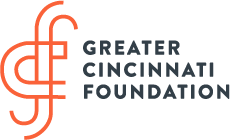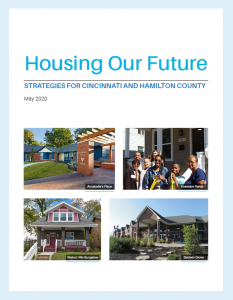Affordable Housing
What does it feel like to live under the stress of not having enough money to pay the rent, utilities, food, or childcare? Every day, individuals and families in our region are making these difficult choices. Data shows nearly 103,000 households in Hamilton County are spending more than 30% of their income on housing and 49,000 households are spending more than 50%.
Experts say households should spend 30% or less on rent to live more comfortably.
By investing in affordable housing initiatives and focusing on economic mobility for all, we can give families more options – helping end the ongoing cycle of generational poverty. Now is the time to take a deeper look and create new opportunities for those in need in the community. Explore and learn 4 affordable housing impact investing neighborhoods here.
You can read more about Affordable Housing in Hamilton County here.
Connect

Join Us
Greater Cincinnati Foundation (GCF) has seeded the Affordable Housing Impact Investing Pool (AHIIP) with $1 million dollars and raised close to $9 million dollars in the past three years, far exceeding the initial five-year goal of $5 million dollars. Our leadership work in the affordable housing space has created a momentum for the region to solve this critical need in the community.
Give to the Annual Fund through your donor advised fund.
What is Affordable Housing?
"Affordable Housing is a need that affects everyone in our region."
Robert Killins, Jr., Director, Special Initiatives, explains the urgency and importance to address affordable housing.
Housing Our Future Report
Greater Cincinnati Foundation is committed to ensuring housing options to stabilize families.
Our goal is to ensure that vulnerable residents of our region, especially women and people of color under 200% poverty, can live in housing that is safe, secure and affordable. Identified through conversations with a cross-sector group of key community players, we are focused on the following population-level issues:
- Eviction rates by race and gender
- Households paying more than 30% of the average median income on housing monthly
- Home ownership rates by race, gender and income
Learn more about these indicators in LISC’s website which includes a full report and strategy guide.
Housing Our Future Report
Affordable Housing Impact Investing Neighborhood Tour
FAQs
For housing to be affordable, it means that a person shouldn’t spend more than 30% of their income on housing and utilities. The current median cost for a two-bedroom apartment in Hamilton County is just over $800 per month. For a person making $16,500 a year or $8/hour, $800 in rent is about 60% of their gross monthly income.
Unfortunately, housing isn’t the only expense that people have. First that have to pay taxes, then there are on the other life expenses like food, clothing, medicine, medical bills, transportation, loan payment, childcare expense, if one has children, not to mention savings and leisure expenses, like going to an occasional movie, play, concert or a sporting event.
Cost-burdened is a term that mean that a household is spending more than 30% of their gross monthly income on housing and utilities, whether they own or rent? Severely cost-burdened is when one spends more than 50% of one’s gross income on housing. Unfortunately, currently over 102,000 families are spending more than 30% of their gross income on housing and utilities and 49,000 families are spending more than 50% of their gross income on housing and utilities. For these families, it will be extremely difficult met all of their other necessary life expenses.

